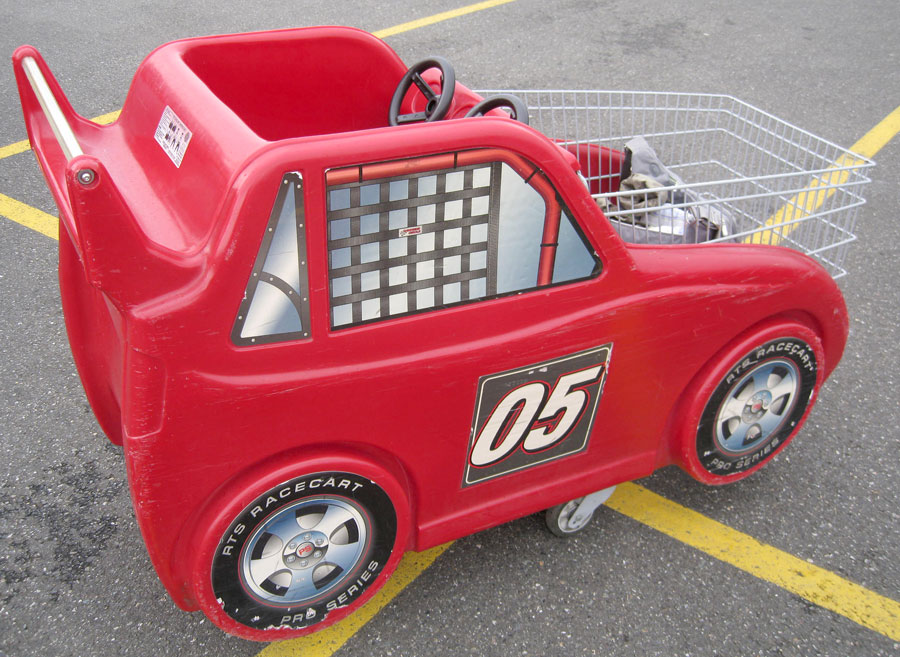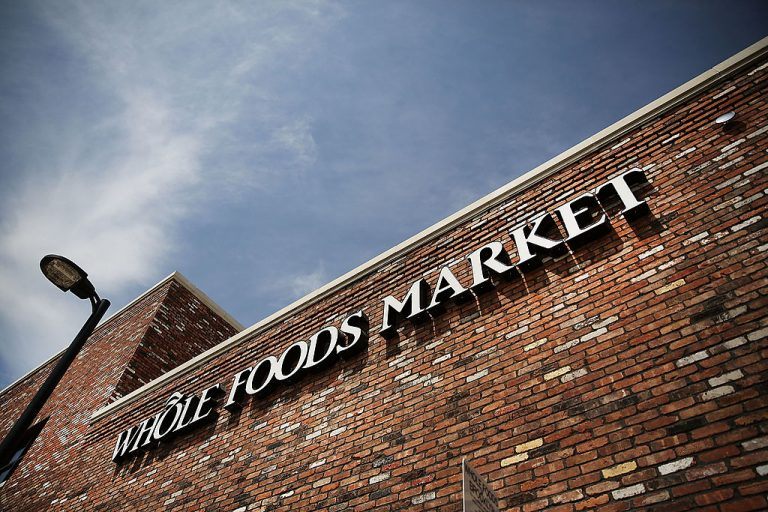15 Money-Saving Ways to Outsmart Your Supermarket

Did you know listening to upbeat music while you grocery shop may help you spend less? Or that “10 for $10” promotions can sometimes cost you more? Reader’s Digest talked to supermarket employees, industry experts and grocery shopping gurus to put together an exhaustive list of the strategies supermarkets use to get shoppers to buy more, as well as some insider advice for shopping smarter. We went through the list and pulled out the 15 best tips for saving money at the grocery store.
1. Don’t feel the need to fill your shopping cart.
Shopping carts are getting larger because testing reveals that they encourage customers to buy more. Make a conscious effort to not fill an enormous cart, or grab a basket instead of a cart whenever possible.
2. Go beyond milk, bread, bananas and eggs when comparison shopping.
These four items are the ones customers most commonly rely on to compare prices between stores, but you’ll have an easier time identifying deals if you make a longer list of the items you purchase most and the price you usually pay. Keep it in your phone for easy reference while out shopping.
3. Start shopping in the middle of the store.
You typically find the produce section in the front of the store, where the “bright colors put you in a good mood and inspire you to buy more.” Stay on your game and stick to your budget by starting more in the middle, surrounded by the less vibrant boxed and canned food.
4. Don’t be afraid to ditch items at the last minute.
Supermarkets have started making checkout lanes more narrow to discourage the over 60 percent of shoppers who change their minds about an item while waiting in line. Personally, I think it’s more considerate to return the item where you found it or give it to an employee to return, but whatever you choose, don’t let the narrow confines of the checkout lane pressure you into buying something you don’t actually want.
5. Wear headphones and listen to upbeat music while you shop.
Stores intentionally play music with a slower beat to encourage shoppers to move more slowly through the aisles — and buy 29 percent more! Put on your favorite workout mix instead and you’ll automatically move at a brisker pace while shopping.
6. Buy cheese from the dairy case instead of the deli counter.
Stores often sell their deli cheeses in plainer packaging in the dairy case, for a lower price.
7. Ask store employees about complimentary add-ons.
“The butcher will tenderize meat for you, the baker will slice a loaf of bread, and the florist will usually give you free greenery to go with your loose flowers,” says one supermarket expert. So don’t be afraid to ask!
8. Buy baked items when they are on sale and pick them up later for a future event.
Some stores will let you buy bakery items up to a month in advance, so if you see a sale, you can pay the lower price and bring in your receipt later to pick up the baked goods closer to your event. Ask at the bakery counter to find out if they allow this.
9. Ask about discounts on bakery or meat items that are about to expire.
Employees may agree to mark down prices on items that are expiring the next day — just ask!
10. Double-check the details of a sale price.
Often a sale will apply to a certain size package, but the store will advertise the discount between the sale-price item and a different-sized, non-sale-price item. Check the details to make sure you are picking up the right one.
11. Do a little math before buying in bulk.
Buying items by the piece in the produce section can be cheaper per pound than buying multi-packs. (Plus you’ll be able to inspect each fruit or vegetable for defects, which can also save money.) Check out the prices and do a little math to figure out if you are getting a good deal or not.
12. Take a closer look at “10 for $10” promotions.
A “10 for $10” promotion boosts sales on an item — even if the promotion actually increases the price per item! So always double-check that these specials are truly deals.
13. Don’t assume endcap displays signal good deals.
Supermarkets sell these end-of-the-aisle areas to companies so they can promote a specific product.
14. Save money on seafood by thawing it yourself.
Seafood labeled “previously frozen” at the seafood counter is often the same product you can find in the freezer aisle, but thawed and marked up about 40 percent. If you have the time to thaw it yourself, buy your seafood frozen instead. Another bonus: it will be fresher!
15. Buy a larger cut of meat and have the butcher trim it for you.
One supermarket butcher notes, “We’ve had people buy one big roast and have us remove the bone for soup, run half of it through the grinder for hamburger, and cut the rest into a pot roast. That can save you about 30 percent compared with buying everything cut.”
Original article from www.thekitchn.com
Share this:
- Click to share on Facebook (Opens in new window)
- Click to share on Twitter (Opens in new window)
- Click to share on Pinterest (Opens in new window)
- Click to share on Tumblr (Opens in new window)
- Click to share on LinkedIn (Opens in new window)
- Click to email a link to a friend (Opens in new window)
- Click to print (Opens in new window)








